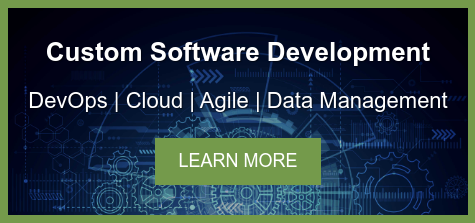.png?width=776&height=388&name=Blog%20Headers%20(10).png)
Artificial Intelligence (AI) and Machine Learning (ML) have surged to the forefront of technological innovation, sparking a wave of excitement and possibilities. In a recent expert panel partnership event with CCC Intelligent Solutions, we delved into the realms of AI, exploring the reasons behind the hype, various types of AI, practical lessons learned, and the future of this transformative technology.
Our expert panelists include:
- Vijay Rajandram, Chief Data Officer Asset Management, Northern Trust Corporation
- Luna Rajbhandari, VP Technology & Data, Cars.com
- Steve Barry, Chief Architect and Director of IT Architecture and Data at William Blair and Lecturer in the Master’s in Applied Data Science at the University of Chicago
- Neda Hantehzadeh, Director of Data Science, CCC Intelligent Solutions
- Surendran Narayanamoorthy, Director of Data Science , CCC Intelligent Solutions
- Steven Penny, Senior Manager of Computer Vision , CCC Intelligent Solutions
In this article, we'll share key takeaways from the event, covering topics from navigating AI hype to future projections of AI.
Hype vs. Facts: What Fuels the AI Enthusiasm?
The enthusiasm surrounding AI can be attributed to several factors, according to our esteemed panelists.
- Increase in GPU: The widespread availability of Graphics Processing Units (GPUs) has supercharged AI development, enabling previously unthinkable advancements.
- Big Data: The AI revolution has been significantly propelled by the vast wealth of data, which acts as a vital source for fueling machine learning models.
- Language Models: Advanced language models like ChatGPT have captured our imagination, displaying remarkable language generation capabilities.
AI Classifications and Applications
AI consists of a variety of categories, each having its own distinct features and practical uses. Our panelists share their insights on these different AI types and their respective applications.
- Generative AI: AI models capable of human-like behavior have made significant progress. For instance, ChatGPT has evolved considerably in a short span.
- Super Intelligent AI Systems: While the concept of super-intelligent AI is a work in progress, it's an area with significant potential.
- Statistical Methods: AI development often relies on statistical techniques to reveal patterns and insights within data.
- Reinforcement Learning: This technique, inspired by behavioral psychology, offers opportunities for enhancing product functionality.
- Computer Vision: The ability to interpret and process visual information has broad applications in product engineering.
Getting Started with AI
The Road to Excellence: Lessons Learned from Cars.Com
- Origin in the Marketing Department: Cars.com's AI journey began with the marketing department's use of data to establish a robust machine learning (ML) practice. This served as a foundational step.
- The Role of Talent and Cloud Data: The success of their AI initiatives hinged on recognizing the essential role of talent and having access to cloud data.
- Data Infrastructure Requirements: A clean and well-structured data infrastructure was identified as a fundamental prerequisite for effective AI implementation.
AI Pioneers: Amazon & Google
- Demonetization of AI: Amazon and Google have played a significant role in making AI more accessible.
- Reducing Barriers to Entry: Amazon and Google have expanded the accessibility of AI, making it more readily available to a wider spectrum of individuals and organizations and simplifying its acquisition process.
- Innovative AI Technologies: The discussion highlighted Amazon's "Bedrock" as an example of innovative, unreleased AI technologies that are diversifying the AI landscape.
High-Level Overview of AI Development
AI models must undergo rigorous testing, produce expected outputs, and be viewed as part of a continuous development cycle.- Bulletproofing Against Inputs: One key aspect of AI model development is ensuring its resilience by rigorously testing it against various inputs to identify vulnerabilities and weaknesses.
- Consistent Output Expectations: Another critical factor is maintaining the consistency of AI model outputs, ensuring they consistently fall within predefined expected areas.
- Iterative Development Cycle: The development of AI models follows a cyclical pattern, marked by continuous iterations and improvements rather than a linear, one-time process.
Industry-Specific Uses & Trends of AI
AI's impact across different industries varies significantly, with each sector finding unique ways to harness the technology's potential. One early adopter of AI, demonstrating a proactive stance towards embracing its transformative capabilities, is the insurance industry.
In the insurance sector, AI has swiftly become a game-changer, reshaping how policies are underwritten, claims are processed, and customer service is delivered. Machine learning algorithms now assist in risk assessment, enabling more accurate pricing and reducing fraudulent claims. Moreover, AI-powered chatbots and virtual assistants streamline customer interactions, enhancing user experiences and expediting issue resolution.
Projected Industry Disruption: Emerging Trends
AI's transformative potential extends to a range of industries, promising significant shifts, even if they may not align entirely with initial expectations. Notably, fields like legal, marketing, copywriting, and coding are on the brink of substantial change.
- Legal: In the legal industry, AI technologies are streamlining document review and legal research, offering faster and more cost-effective solutions.
- Marketing: There has been a profound shift in AI-driven tools that optimize ad targeting, content creation, and customer segmentation. The promise of completely autonomous marketing campaigns may not be imminent, but AI is undeniably shaping more effective and data-driven marketing strategies.
- Writing & Editing: AI has shown promise in generating content, providing automated proofreading, and even suggesting improvements. Though it may not replace human writers, AI contributes to more efficient content creation and error-free documents.
- Coding: AI tools like GitHub Copilot have changed the landscape of software development by assisting developers in writing code, catching bugs, and streamlining the coding process. This shift is poised to augment developer productivity and the quality of software, redefining the coding experience.
Governance
Effective governance is the linchpin of AI's reliability. It ensures that AI models consistently perform as intended and align with industry-specific regulations. This involves a comprehensive approach to model oversight, data management, and adherence to established guidelines.
- Monitoring Drifts and Shifts in Data: Ongoing surveillance of data inputs to detect any unexpected shifts or deviations, allowing timely corrective actions.
- Optimizing Model Training: Regularly refining the training process to enhance model accuracy and reliability.
- Leveraging Startup Tools: Utilizing tools and solutions provided by startups specializing in AI governance and compliance.
- Parameter Adjustment: The ability to fine-tune model parameters, ensuring they adapt to changing data patterns or requirements.
- Model Reproduction in Production: Ensuring that AI models can be consistently replicated in a production environment to maintain performance.
- Compliance with Industry Standards: Adhering to industry-specific regulations and guidelines, such as those outlined by NAIC and CCPA, to ensure governance practices meet established standards.
Limiting Bias
In the realm of AI governance, addressing bias stands as a foundational principle, and it encompasses several critical components. From meticulous data curation to vigilant testing in production environments and recognition of the influence of economic factors, these measures form a comprehensive strategy to ensure that AI remains free of bias.
- Data: The foundation of combating bias lies in the careful curation of data. This process involves removing potentially biased attributes like zip codes and income levels, which can introduce partiality into AI models.
- Production Testing: To maintain impartiality, AI systems must undergo rigorous testing in production environments. This ensures that the behavior of AI remains unbiased and equitable, safeguarding against unintended consequences.
- Economic Impact It's essential to recognize that economic factors can lead to unforeseen changes in AI model behavior. Consequently, proactive measures must be taken to address these shifts and uphold fairness in AI decision-making.
Challenges & Risks
Undoubtedly, there are many obstacles and risks to consider when implementing AI into an organization. Below are some of the most prominent that our panelists discussed.
Hiring Data Scientists
- Cultural Fit Matters: Cultivating a collaborative culture and providing an environment that encourages experimentation is paramount in the recruitment of data scientists.
- Define Roles Clearly: Avoid the pitfalls of vague job descriptions by investing additional effort to provide clarity on the role's expectations and the level of maturity required.
Best Practices in Team Structure
- Learning Agility: Seek individuals who possess the ability to learn quickly and adapt to the ever-evolving AI landscape.
- Collaborative Teamwork: Building effective data science teams demands the presence of team players who can collectively harness their skills and insights.
- Tomorrow's Focus: When hiring, it's imperative to keep an eye on the future, focusing on the long-term growth and development of your team, rather than immediate needs.
Drift & Shift
- Input Instabilities: Recognize that drifting inputs can significantly impact AI performance, often leading to negative outcomes.
- Outputs Evaluation: Continuously evaluate the outputs of AI systems to ensure they align with expectations and quality standards.
- Embrace Online Learning: Online learning is a powerful tool for staying updated with the evolving AI landscape.
- Volatility Awareness: Acknowledging the presence of a volatility index and understanding its implications is crucial for informed decision-making in AI development.
Our panelists emphasized the need for proactive strategies and a forward-thinking approach to stay at the forefront of these dynamic changes.
Optimizing Change Management in AI/ML
Change management in AI/ML is a multifaceted endeavor that encompasses a range of strategies and considerations. At the heart of it lies the importance of navigating this landscape with a clear vision and a focus on what truly matters.
- Utilizing Your Data: Rather than building on open data, maximize the potential of your organization's data to create a more tailored and valuable AI solution.
- Crafting a Vision: Develop a compelling narrative about what the AI offering will look like, ensuring it aligns with organizational goals, customer needs, and product fit.
- Problem-Centric Approach: Instead of searching for applications, identify real-world problems that AI can solve effectively, ensuring that your efforts have a meaningful impact.
- Internal Change Management: To drive internal change, focus on aligning goals within the organization, fostering a culture of learning, and restructuring teams to accommodate AI integration.
- Balancing Research and Development: Find an equilibrium between research activities and development efforts, striking a balance that fosters innovation while delivering practical solutions.
- Tracking Best Solutions: Maintain a systematic approach to identify, develop, and implement the most promising AI solutions, ensuring that they reach the production stage.
- External Change Management: Recognize that external factors like economic changes and advancements in AI, such as ChatGPT, impact the landscape. Embrace customer interaction to understand pain points and leverage resources like customer collaboration labs to gather invaluable insights.
The Future of AI
As we stand at the brink of a new era, the future of AI presents a horizon filled with promises, challenges, and boundless potential.
Our panelists gave us some insight as to their thoughts on what the future holds for AI capabilities:
- ChatGPT 4: The next iteration of AI language models, offering enhanced capabilities and applications.
- Synthetic Reinforcement: AI's role in shaping and reinforcing synthetic environments for various applications.
- Earth's Best Friend: AI's potential to mitigate climate change and environmental issues.
- Humanity: The transformative impact of AI on various aspects of human life and society.
- Lowering Barriers to Entry: The ever-reducing hurdles for individuals and organizations to engage with AI technology.
AI isn't just a buzzword; it's a powerful tool that can be harnessed to deliver exceptional products and solutions, regardless of your role or level of experience in the field. While we still have a lot to learn about AI, we're eager to embark on this journey with you. Our events are a great place to start conversations and hear what other like-minded leaders are doing in their industries.


